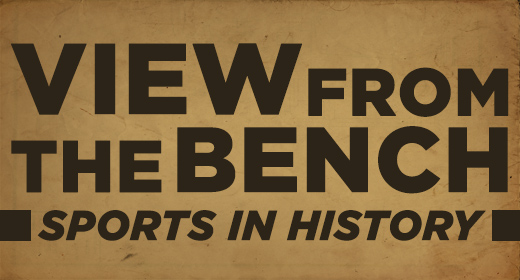Home Field Advantage. We know that the home team wins more games than the visitors over time and across sports, but do we know precisely why that occurs? We must first consider whether the rules of the game or the location in which it is played presents an identifiable benefit.
A football field, whether at Lambeau Field in Green Bay or here at the University of Phoenix Stadium, is 100 yard long and 60 yards wide. The end zones are 10 yards deep and the goal posts on each end are mirror images of each other. A hockey rink is 85 feet wide and 200 feet long. The goalie must protect a net that is 6 feet wide and 4 feet high, regardless of whether he is a member of the home team or visitors.
In basketball, the court is 94 feet long and 50 feet wide and each hoop is precisely 10 feet high. The free throw line on both ends of the court is 15 feet from the hoop. The first team with the puck in hockey or basketball in the NBA is based upon a faceoff or opening tap and, for football, is based upon a coin flip. There is no prescribed rule as to who gets the ball first or who has last possession at the end of the game.
Therefore, other than the contours of the stadium or arena and the receptiveness of the fans attending the game, there is no objective difference between being the home team or visitor- same field or court or ice and same rules.
But there is one sport where the game is actually played differently based upon whether you are at your “house” or on the road. By its design, baseball provides an advantage to the home team. No other major sport guarantees the home team the last opportunity to score. This is more than a psychological advantage. Just ask anyone who is in an argument or debate whether they would always like to have the last word.
Consider the overtime rules in NCAA College Football games. The team that wins the coin flip always asks to have second possession of the football.
Beyond this clear distinction, baseball is the only major sport where the dimensions of the field vary from stadium to stadium. True, the bases are 90 feet apart and the mound is 60 feet 6 inches from home plate no matter whether the stadium is located. But the outfield fences vary in distance from home plate depending on the stadium and the amount of room in foul territory is also a variable.
This matters. Just consider the short porch in Yankee Stadium’s right field, the Green Monster in Boston, the oversized area of foul territory in Oakland, and the altitude friendly air space at Coors Field in Denver. If you were building a team and making roster decisions, wouldn’t you consider the location and the dimensions of the stadium where you play 81 games a season? A team in a hitter friendly park could develop a roster of players with power, while a team that plays in a pitcher friendly park might look for speed and line drive hitters over those who hit for power. They may even go so far as have their grounds crew mow the lawn a bit more or less, depending on whether the home team wants ground balls to be slowed by the grass or sneak quicker through holes between infielders.
With discernible differences between home field benefits that exist for baseball but no other major sport, one would expect that the percentage of home team victories would be highest for baseball. But the opposite appears to be true.
In a very unscientific assessment, I have looked at available data for blocks of time for each major sport. From 1991 through 2002, the winning percentage in baseball for the home team was .535. Contrast that with hockey, where the home team winning percentage was .550 in the NHL from 1998-2003. For football, the home team winning percentage from 2001 through 2005 was .581. Basketball tops them all, where the home NBA team had a winning percentage of .608 from 2001-2006.
Therefore, the one sport (baseball) where the game has actual tangible differences for the home team over the visitors (last at bat, dimensions of ballpark, shaping of roster to fit ballpark) had the least impact on the winning percentage for the home team versus the other big 3 sports.
There’s a lot that goes into why playing at home is advantageous, from the comfort of being in your own familiar locker room and bed, to the jet lag (or lack thereof) from a coast-to-coast road trip to the level of fan support. My guess is that we, as fans, have more of an impact than we might otherwise think. For basketball and hockey, the game is played in a closed arena where the fans are relatively close to the playing surface. Noise level and support would be felt by the players more in that environment.
For football, the average attendance out-distances the other three sports and, since there are only 8 home games a year during the regular season, the pent up energy of the fan base can be more maniacal. Baseball has the highest number of home games (81), the most open air or large space facilities and the slowest pace. Perhaps this somewhat neutralizes the home field advantage.
But whatever may contribute to the benefit of playing at home, it is evident that baseball’s built-in benefits to the home team of last at bats and roster make-up to match the playing facilities appear not be among them. So when we sing “Take Me Out To The Ballgame” and chant “root, root, root for the home team,” maybe we need to turn up the volume.


